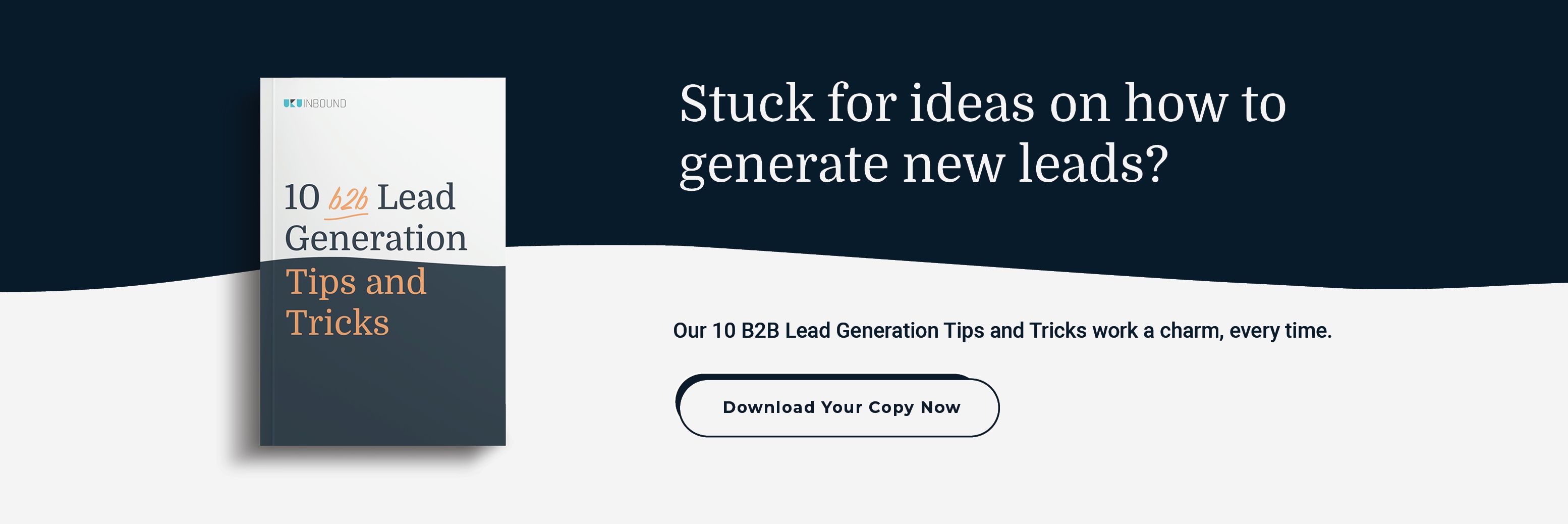One of the main reasons businesses implement digital CRMs like HubSpot is for the insights they can gather about their customers and for the efficiency that comes from that data.
Lead scoring is a perfect example of that.
It creates a way for businesses to improve the quality of leads that get handed over to their sales teams, improving conversion rates and generating higher revenues.
According to Marketo, a 10% increase in lead quality improves sales productivity by up to 40%.
Lead scoring is a way to rank leads to determine their sales readiness. Leads are scored based on the interest they show in your business, their current place in the buying cycle, and their overall company fit—and then they’re fast-tracked to sales or developed through lead nurturing.
In this blog, we are going to outline 10 steps to develop your own lead scoring model.
1. Collect info
Effective lead scoring relies on data to assign scores to each lead so identifying what information matters most is key.
Start by looking at information from both your marketing and sales teams. Look at past deals and current opportunities in your sales funnel to understand what traits your customers have in common and what information makes them easy to identify.
If you're looking for a comprehensive guide to supercharging customer acquisition for your business, then download our eBook to help you. You can grab the PDF version here.
2. Determine your ideal target
Once you have all the information, use it to define your buyer personas. These are fictional representations of your ideal customers and include demographic, psychographic, and behavioural information.
3. Align marketing and sales objectives
Creating alignment between marketing and sales is often overlooked when analysing the sales funnel. It is important for both teams to agree on what criteria must be met before a lead’s status changes.
Make sure all your teams agree with the buyer persona descriptions and on what criteria need to be met before a lead’s status can be changed i.e from marketing qualified lead (MQL) to sales qualified lead (SQL) or from a lead to an MQL.
4. Select the scoring criteria
The next step is to determine which criteria have an impact on determining the sales readiness of your leads.
These can be broken down into two categories:
- Explicit scoring - This includes demographic and firmographic information likes job title, company size, industry, location, and company revenue.
- Implicit scoring - This is all the information you collect from tracking a leads interactions with you and includes information derived from their behaviour like email opens and clicks, page visits, form completions, webinar attendance etc.
5. Assign positive values to your lead scoring system
Once you have identified the most important criteria, assign a score to each of them. Avoid giving all the criteria the same score as not all factors are equally important to determine which leads are a good fit.
Visiting your pricing page might be with 10 points, while opening an email or reading a blog post might only be worth 1 or 2 points.
6. Assign negative values to your lead scoring system
Assigning negative scores to criteria that show a lack of interest from your leads is also important. This might include unsubscribing from your marketing communication, not opening emails for a certain period of time or visiting a non-product webpage like your careers page.
It's time to supercharge your acquisition efforts 🚀. Download our complete guide to customer acquisition right 👉 here.
7. Determine your threshold for sales-readiness
Now that you have established your lead scoring model, you need to determine how many points are needed before a lead is handed over to your sales team.
To do this, score your past customers and establish when they were deemed sales-ready. Also look at any leads that failed to convert, score them and determine how low your score can be without passing bad leads over to your sales team.
8. Test your scoring model
Before you launch your new lead scoring model, test it on a random sample of your current database.
If your ideal prospect is a marketing director at a large company with more than 1000 employees, who attended a product-specific webinar, and visited your pricing page in the past 7 days, then a combination of those attributes should equal or exceed the threshold-point barrier to qualify them as sales-ready.
9. Review and optimise
Once you have launched your lead scoring model, you must continue refining and optimising it. Regularly meet with your marketing and sales teams to gather feedback and understand how the model can be improved.
10. Recycle leads that are not sales-ready
It is inevitable that not all of your leads will be sales-ready despite their score. To avoid discarding these leads, their scores should be reset, and they should be filtered back into your marketing system to be nurtured before being handed back to sales.
Key Takeaways
Lead scoring allows you to prioritise leads based on information they provide about themselves and by understanding their behaviour and engagement with your business.
Prioritising sales-ready leads means your sales teams are focused on the highest quality leads while allowing your marketing team to focus on nurturing those that aren’t.
Developing a lead scoring model also creates a clear understanding of how your marketing and sales teams should engage with leads and aligns both for greater success.



